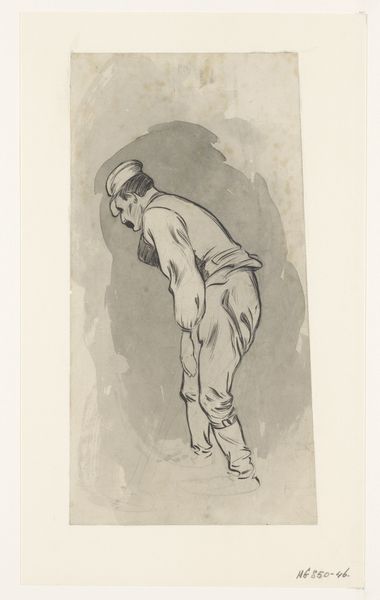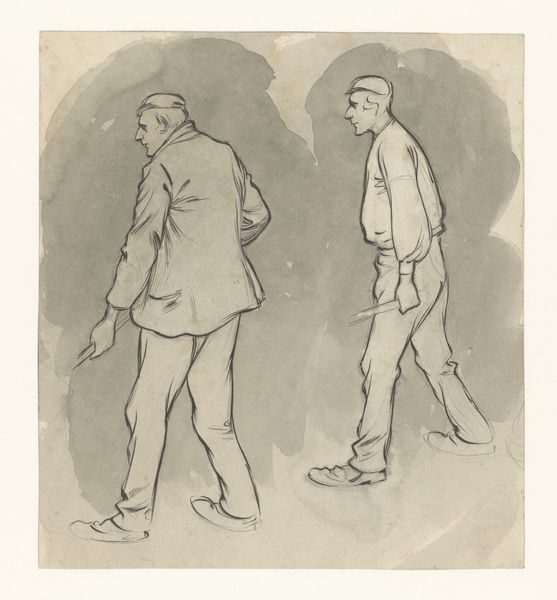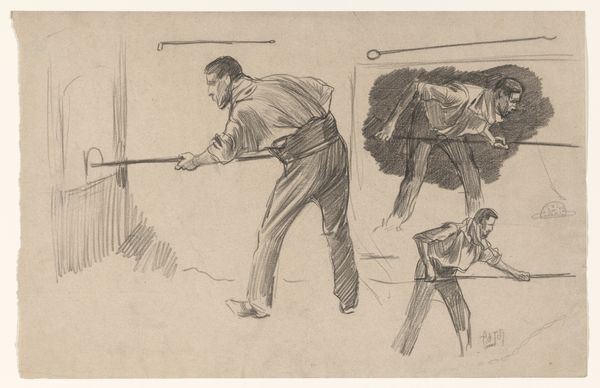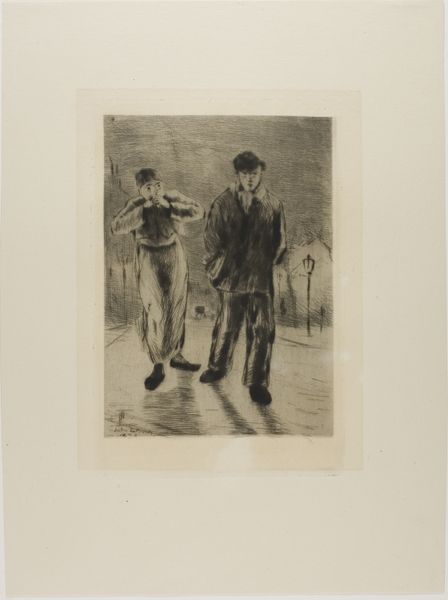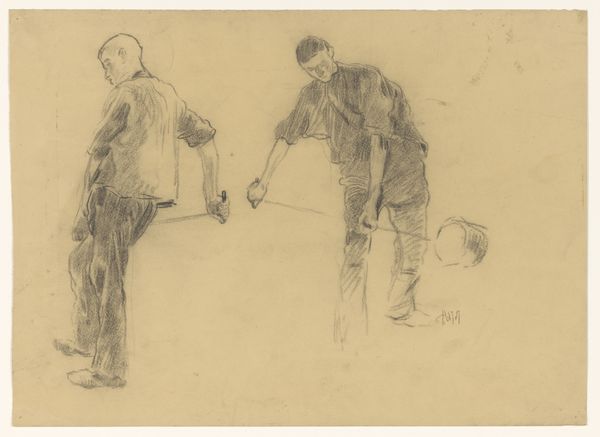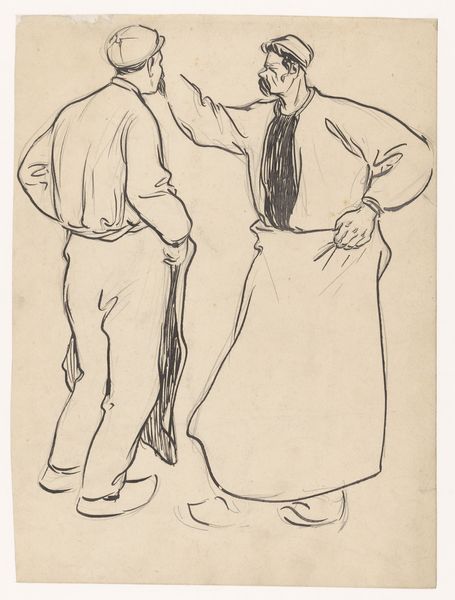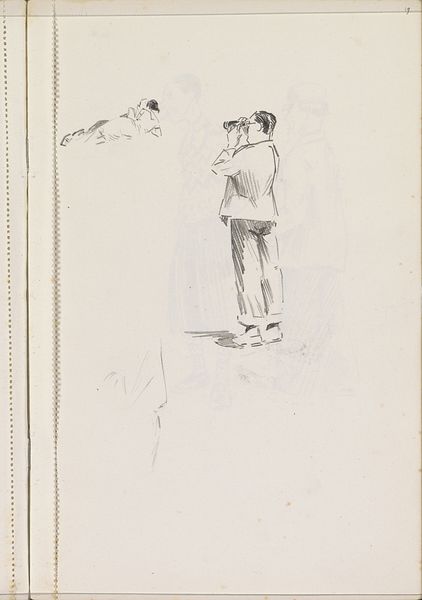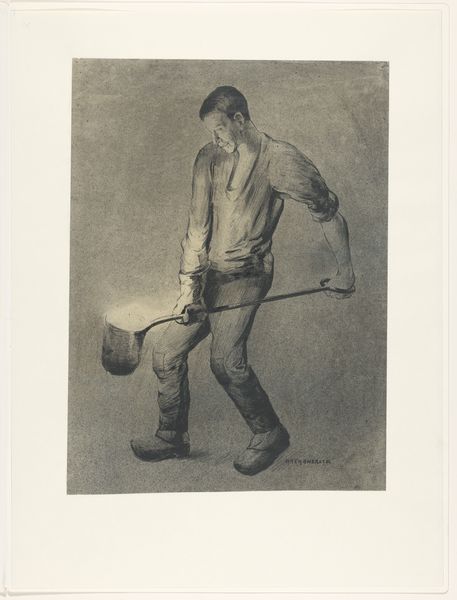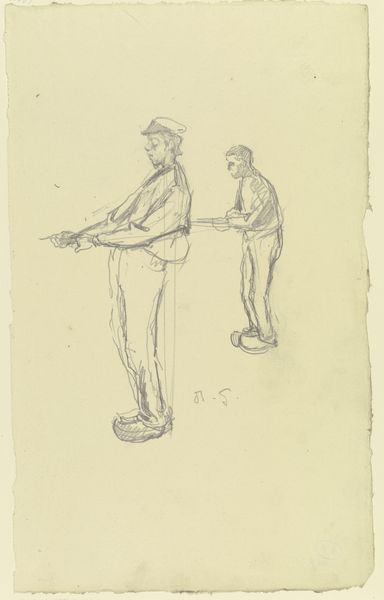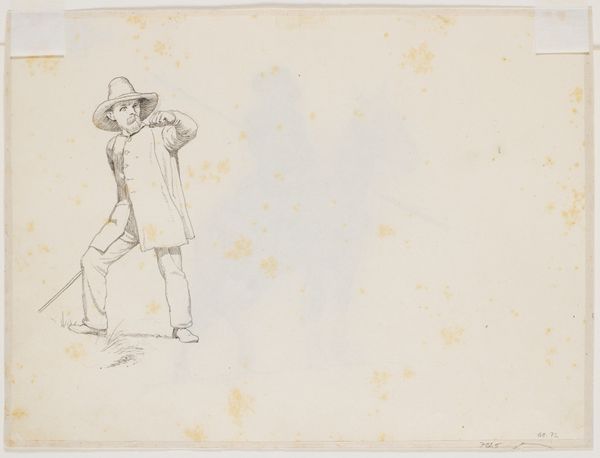
drawing, paper, ink, pencil
#
portrait
#
drawing
#
comic strip sketch
#
imaginative character sketch
#
light pencil work
#
pencil sketch
#
cartoon sketch
#
figuration
#
paper
#
personal sketchbook
#
ink
#
idea generation sketch
#
ink drawing experimentation
#
pencil
#
sketchbook drawing
#
genre-painting
#
storyboard and sketchbook work
#
modernism
#
realism
Dimensions: height 229 mm, width 229 mm
Copyright: Rijks Museum: Open Domain
Curator: What strikes me first is the incredible economy of line. Editor: You're right. There's something starkly beautiful in that bareness, that understatement. It almost feels Japanese in its sensibility. Curator: Interesting. The piece is entitled "Twee Arbeiders," or "Two Workers," attributed to Jan de Waardt, made sometime between 1881 and 1899. It's currently held here at the Rijksmuseum. De Waardt used pencil and ink on paper to render these figures. Look closely, and you’ll see the rapid, almost restless strokes defining the forms. Editor: Restless is a good word. They're caught mid-action, wielding what looks like long poles. What do you make of their attire? The almost baggy uniformity of their work clothes seems significant, somehow. Curator: Absolutely. Clothes often symbolize more than mere practicality; they represent status, belonging, or even conformity. Here, it suggests a collective identity. These are men defined by their labor. There is nobility even in their postures as if the task imbues the body with grace despite hardship. We see such themes in much of the Realist movement where ordinary people, doing ordinary labor, become subjects for art. Editor: And it feels timeless. This isn't just about physical exertion; there is a strange stillness that seems symbolic of all working people everywhere. There's an echo of stoicism and a somber kind of strength radiating from them, wouldn’t you agree? The lack of background amplifies it—like they’re caught outside of time. Curator: The figures exist suspended, archetypal in their toil. Note the downcast eyes and slumped shoulders. This evokes pathos, inviting reflection on the human condition, its burdens, its inherent dignity despite, or perhaps because of, its struggles. I wonder, too, what their tools represent. What are they making or unmaking? Editor: I suppose that remains beautifully unanswered, allowing each of us to find a resonance within our own experiences. Curator: Indeed. A seemingly simple sketch, yet profoundly evocative of so much more than meets the eye. Editor: It’s the suggestive emptiness that gives it power, the invitation to fill in the blanks with our own narratives. Art doesn’t get much better.
Comments
No comments
Be the first to comment and join the conversation on the ultimate creative platform.
